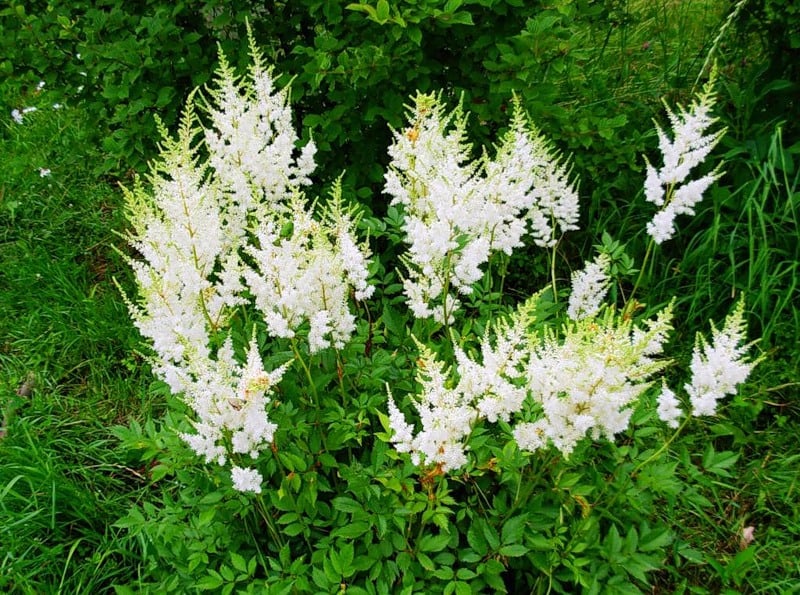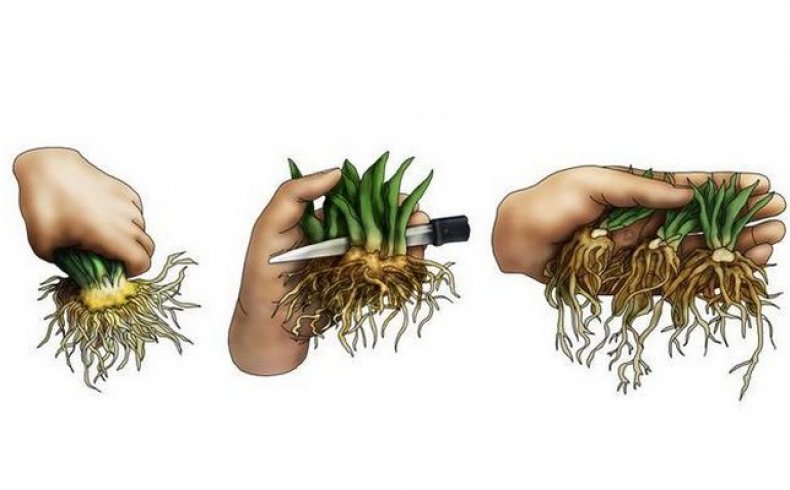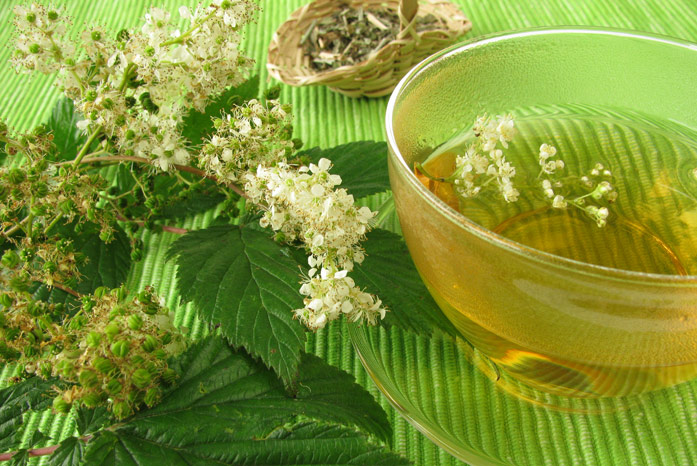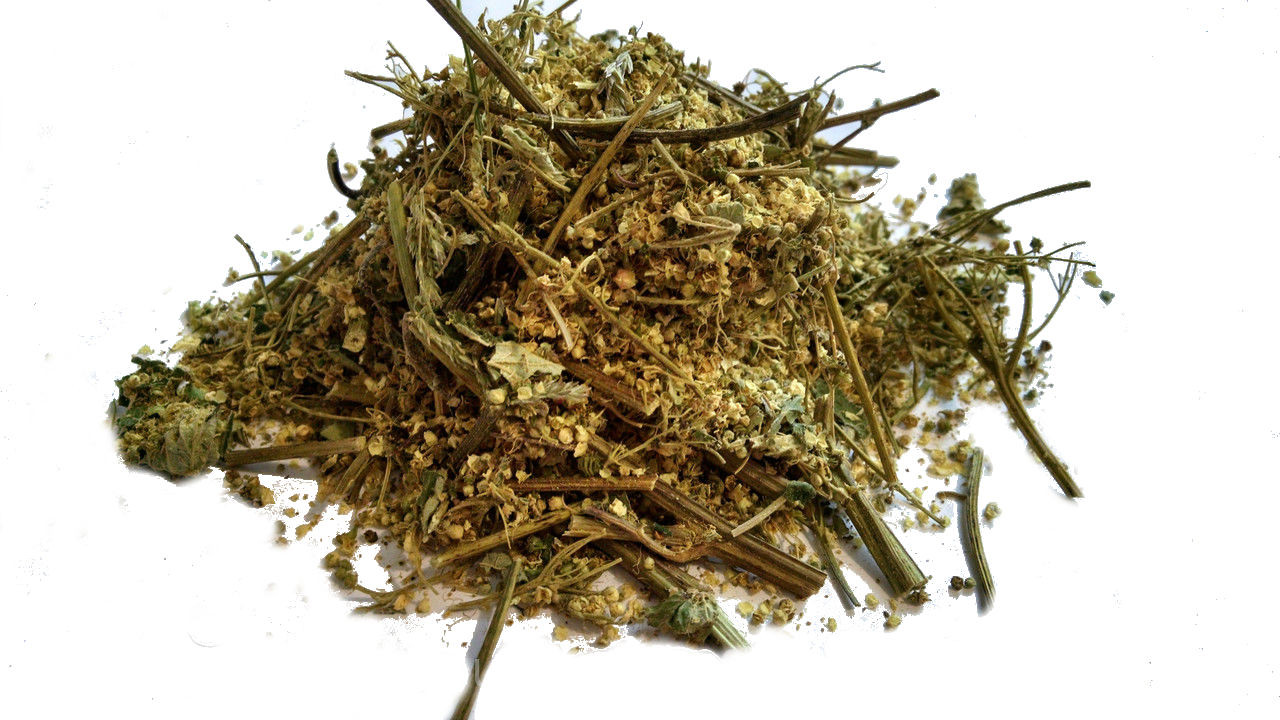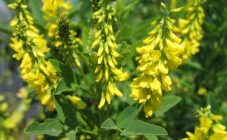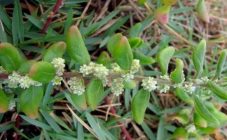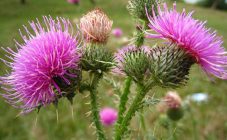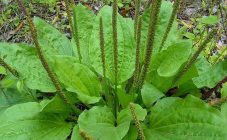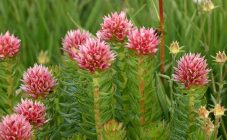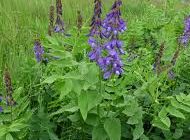Content:
Meadowsweet, or meadowsweet, has long been used to treat people. Traditional healers plucked the tops of perennial panicles during the flowering period, and made medicinal decoctions from them. Meadowsweet is a grass that is unpretentious, but still requires compliance with some nuances in care.
Description
In most cases, only herbalists and healers know what meadowsweet herb looks like. Meadowsweet is a large perennial herb with erect stems and feathers. Occasionally, you can find a plant with palm foliage. There are a lot of flowers on the grass. They are painted in white and pink shades, collected in corymbose-paniculate inflorescences.
The flowering period is in June. The cups are composed of 5-6 petals. The perianths of the meadowsweet are double. Meadowsweet flowers are naturally endowed with the most delicate honey, vanilla and almond aromas.
Plants belong to moisture-loving and cold-resistant crops.
Meadowsweet varieties
There are many different types of meadowsweet. The most popular of them are:
- Elmaceous meadowsweet is a perennial, similar to other species of meadowsweet, reaching a height of more than 140 cm. The flowers of the grass are painted in yellow-white shades, the inflorescences are quite thick and large. The fragrant aroma of flowers can be felt from afar. You can find the elm-leaved meadowsweet in the area of swampy meadows, near water bodies and in a dense thicket of bushes.
- Six-petaled meadowsweet. The main difference of the variety is the presence of a root system with tubers and a slightly smaller diameter of flowers. The height of the grass does not exceed 75-80 cm. You can meet the six-petalled meadowsweet in the meadow and forest edge. Occasionally thickets of perennials grow along the tracks.
- The grass meadowsweet Kamchatka is widespread in Sakhalin, Kamchatka and the Kuril Islands. The grass belongs to tall crops. Plant height can reach 300-310 cm. The inflorescences of the variety are large. They are painted in snow-white and cream shades. Kamchatka medicinal herb prefers wet areas. To treat a variety of ailments, healers use the stems, flowers and foliage of the culture. However, in some cases, a meadowsweet root system may be needed. Tavolga Kamchatka has anti-inflammatory, antispasmodic properties. Due to its properties, Kamchatka meadowsweet can cope with gastrointestinal diseases, epileptic seizures, and stool disorders.
- The palm-like meadowsweet is a perennial that is widespread in the Far East. You can meet him in a forest meadow and in thickets of bushes. The foliage of this variety is large. Its shape is called finger due to its similarity to the palm of the hand. The root system of the plant is long underground. The height of meadowsweet reaches 100-110 cm. Roots, stems and foliage of the culture can be used for treatment. The soil for planting meadowsweet should be loose.
- Steppe and common meadowsweet can be found on meadow steppes, in thickets of bushes, on the edges of light forests. With prolonged drought, the common meadowsweet can completely shed its foliage. New greens will start growing only in September. Steppe meadowsweet and common meadowsweet grows in well-lit areas. The grass does not tolerate excessive shading by other plants.
Reproduction
Quite often, people plant a meadowsweet using seeds. The growth of the planting material is hindered by the waterproofness of the shell and the deep physiological dormancy of the seeds. The state of dormancy can sometimes drag on so much that some of them will begin to germinate only the next year after natural stratification.
To get seedlings at home, you will need to use one of the traditional techniques:
- stratify the seed at low temperatures in the refrigerator or just under a layer of snow;
- to carry out treatment with growth regulators and a solution of micronutrients;
- carry out scarification by soaking the planting material in water for 5-8 days (you can alternate the process of soaking with drying).
If the seeds don't sprout, the seller won't always be at fault. As a rule, planting material, in spite of the place of collection and ecological conditions of cultivation, can have different germination and germination friendliness. Seeds that are harvested from dry habitats have the greatest chance of sprouting. The germination rate is maintained for 6 years.
When the following conditions are met, seed propagation of meadowsweet will be very effective:
- Soil moisture should be high.
- Before sowing, seeds must be treated with growth stimulants, which affect the level of germination.
- The first months after emergence, they should be shaded. In nature, the grass gets used to the lack of sunlight in the first year of growth. It is very important to adhere to the natural growth conditions of the plant.
Experts consider it advisable to use the vegetative reproduction method, which can be carried out using special formations:
- root tuber (in the common meadowsweet);
- root offspring in the elm-leaved type of culture.
Culture properties
Meadowsweet grass - what is it from and what diseases does it help to cure? The herbaceous plant has properties that have a positive effect on the human body:
- bactericidal;
- diuretic;
- antispasmodic;
- calming;
- wound healing;
- hemostatic;
- anti-inflammatory;
- anthelmintic.
On the basis of meadowsweet, you can make healing:
- ointments;
- infusions;
- decoctions.
The latter are used to treat dysentery, epileptic seizures, inflammation of the kidneys and urinary system, nervous ailments and hypertension. A decoction made from the root system and flowers can be consumed as an anthelmintic agent. Tinctures based on flowers will help get rid of gastric ulcer and 12 duodenal ulcer. Meadowsweet ointments will help in the treatment of diseases of the upper respiratory tract.
The use of meadowsweet will help get rid of many ailments and quickly restore lost health.
Diseases and pests
Tavolga is a medicinal herb that is naturally endowed with strong immunity. Taking care of the plant, you can protect it from the appearance of various ailments. Only the following can adversely affect the health of a herbaceous crop:
- Powdery mildew. Most often, the Kamchatka species of meadowsweet suffers from this fungal disease.When affected, young shoots of meadowsweet are covered with a whitish-gray loose bloom. A month later, sporulation of the fungus captures the foliage, flowers and the bracts. For the treatment of powdery mildew, experts recommend treating the herbaceous culture with a solution of colloidal sulfur. You can also use soda ash. The affected parts of the grass must be urgently cut and burned.
- Rust, most often affecting the meadowsweet. A sign of damage will be the appearance of red-brown pads of a fungal nature on the foliage of the plant. In an adult grass, a massive defeat of the leaves of the basal rosettes is most often observed. Experts advise treating the infected bush as soon as possible with a fungicidal preparation, for example, topaz, chorus and cuproxate. Processing is carried out at a mandatory interval, which should last 8-10 days. Spraying the bushes should be carried out until the unpleasant symptoms are completely eliminated.
Pests such as the following can cause significant harm to the plant:
- Aphids are small parasites that feed on plant cell sap. As a result of their "labor", the foliage of the grass curls and dries up. Affected clusters become dense, small buds dry out almost immediately after blooming. Aphids can affect any type of meadowsweet, except for the common one.
- The wireworm is a click beetle larva that damages the root system of a crop. You can get rid of the wireworm by treating with strong soap solutions or insecticidal preparations such as actellik, karbofos and biotlin. You can harm harmful larvae by liming the soil on the site.
Collection and storage
Meadowsweet bloom continues from mid-June to late July. Fruit ripening begins only after flowering is complete. It is best to harvest the root part of the culture in late September or early April. To do this, you need to dig out the root with a shovel, shake it off the soil and cut into strips, the length of which is left within 10-14 cm. Using a knife, the aboveground part of the grass is cut off and washed immediately under running water.
When collecting raw materials, place it in a thin layer on a paper surface and dry it under a canopy on the street. If the grass is placed in the attic for drying, it is important to ensure that the area is well ventilated. Correctly harvested and dried grass will be colored in dark brown tones, have a pleasant smell and a bitter-tart taste.
Thus, it is possible to grow this herb at home, but for this you will have to make every effort, providing the meadowsweet with the necessary conditions. Yes, flowering will have to wait at least 5 years, but for the sake of the medicinal properties of the culture, you can endure. At this time, the main thing is to ensure that the grass is not affected by diseases and pests!
